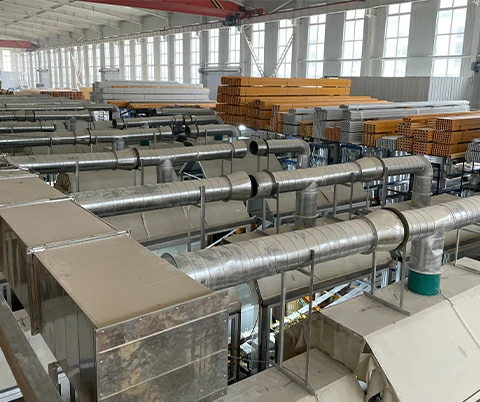loading...
- No. 9, Xingyuan South Street, Dongwaihuan Road, Zaoqiang County, Hengshui, Hebei, China
- admin@zjcomposites.com
- +86 15097380338
- Welcome to visit our website!
grp grating panels
Understanding GRP Grating Panels A Comprehensive Overview
In various industrial and commercial applications, the choice of materials is vital for ensuring safety, durability, and efficiency. One of the materials that has gained popularity in recent years is Glass Reinforced Plastic (GRP), commonly known as fiberglass. Among the many applications of GRP, grating panels stand out due to their unique properties and advantages. This article delves into GRP grating panels, exploring their features, benefits, applications, and why they might be the right choice for your next project.
What are GRP Grating Panels?
GRP grating panels are lightweight, strong, and corrosion-resistant alternatives to traditional steel or aluminum grating. They are manufactured by combining glass fibers with resin, providing not only remarkable structural integrity but also versatility and adaptability in various environments. The manufacturing process involves layers of fiberglass being embedded in a resin matrix, which is then cured to form rigid panels. The result is a product that is not only robust but also resistant to a range of environmental factors, including chemicals, moisture, and temperature extremes.
Key Features of GRP Grating Panels
1. Durability GRP grating is designed to withstand heavy loads and has high tensile strength. It is resistant to warping, rusting, and corrosion, making it suitable for harsh environments.
2. Lightweight Compared to metal grating, GRP grating panels are significantly lighter. This characteristic reduces transportation costs and makes installation easier and faster.
3. Slip Resistance Many GRP grating products are designed with a textured surface, providing excellent slip resistance, which is essential in areas where liquids may spill.
4. Customizability GRP panels can be molded into different shapes and sizes to meet specific requirements. They can also be manufactured in various colors, aiding in visibility and aesthetic appeal.
5. Electrical Insulation Unlike metallic grating, GRP does not conduct electricity, making it a safer choice for applications in electrical environments.
Advantages of Using GRP Grating Panels
- Cost-Effectiveness Despite the initial investment, GRP grating requires minimal maintenance and has a long service life, which can lead to cost savings over time
.grp grating panels

- Environmentally Friendly The production process for GRP is less energy-intensive compared to metal manufacturing processes, making it a more sustainable choice.
- Resistance to Chemicals Many industries use aggressive chemicals, and GRP panels resist a wide variety of acids and alkalis, making them ideal for chemical processing environments.
- Safety With their slip-resistant surfaces and lightweight construction, GRP grating panels enhance safety in workplaces, reducing the risk of accidents and injuries.
Applications of GRP Grating Panels
GRP grating panels find applications across numerous sectors, including
1. Industrial Facilities Used for walkways, platforms, and stair treads, GRP grating provides safe access in factories and plants.
2. Wastewater Treatment GRP’s corrosion resistance makes it ideal for use in environments exposed to harsh chemicals and biological materials.
3. Marine Applications With its buoyant properties and resistance to saltwater corrosion, GRP grating is widely used in docks, piers, and walkways near water bodies.
4. Construction Often selected for flooring in commercial buildings, GRP offers strength and aesthetic appeal.
5. Food Processing GRP panels can be designed to meet health regulations, making them suitable for environments where hygiene is paramount.
Conclusion
GRP grating panels serve as an innovative solution for various industrial, commercial, and construction applications. Their combination of strength, lightweight design, and resistance to environmental factors makes them a preferred choice for many professionals. Whether you are considering a new installation or upgrading existing structures, understanding the advantages of GRP grating can aid in making informed decisions that enhance safety, efficiency, and sustainability. As industries evolve and demand more resilient materials, GRP panels are poised to play a crucial role in future developments.
-
The Rise of FRP Profiles: Strong, Lightweight, and Built to LastNewsJul.14,2025
-
SMC Panel Tanks: A Modern Water Storage Solution for All EnvironmentsNewsJul.14,2025
-
GRP Grating: A Modern Solution for Safe and Durable Access SystemsNewsJul.14,2025
-
Galvanized Steel Water Tanks: Durable, Reliable, and Ready for UseNewsJul.14,2025
-
FRP Mini Mesh Grating: The Safer, Smarter Flooring SolutionNewsJul.14,2025
-
Exploring FRP Vessels: Durable Solutions for Modern Fluid HandlingNewsJul.14,2025
-
GRP Structures: The Future of Lightweight, High-Performance EngineeringNewsJun.20,2025
